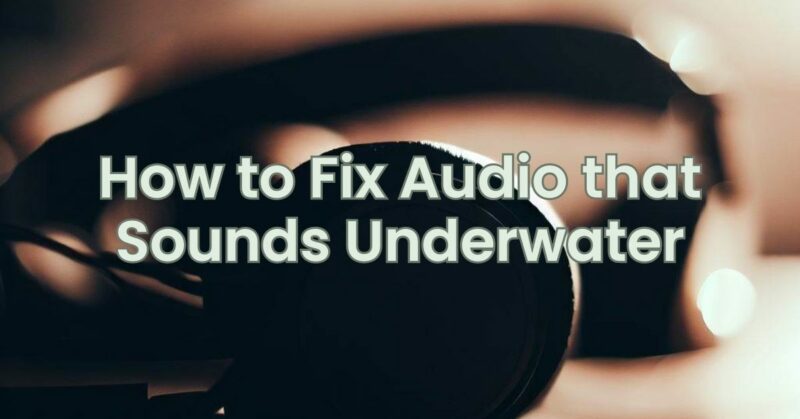Experiencing audio that sounds underwater can be frustrating, as it diminishes the clarity and quality of the sound. Whether you’re using headphones, speakers, or any other audio device, the underwater sound effect can make it difficult to enjoy your favorite music, movies, or other media. Fortunately, there are several steps you can take to troubleshoot and resolve this issue. In this article, we will guide you through the process of fixing audio that sounds underwater.
- Check the Audio Source: Start by checking the audio source, such as a smartphone, computer, or media player. Ensure that the audio file or streaming source you’re playing is not corrupted or of low quality. Try playing different audio files or sources to determine if the issue persists across all media.
- Check the Connection: If you’re using wired headphones or speakers, check the audio cable connections. Ensure that the cables are securely plugged into the audio source and the device itself. If using wireless devices, verify that the Bluetooth connection is stable and not experiencing any interference.
- Adjust Equalizer Settings: Many audio devices and media players have built-in equalizer settings that allow you to adjust the sound frequencies. Check the equalizer settings on your device and make sure they are set to the default or recommended settings. Experiment with different equalizer presets to see if any adjustments improve the sound quality and eliminate the underwater effect.
- Clean the Audio Device: Dirt, dust, or debris can accumulate on the speakers or headphone drivers, affecting the sound quality. Carefully clean the audio device using a soft, lint-free cloth or a small brush. Be gentle and avoid pushing any debris further into the device. Cleaning the audio device can help restore clarity and eliminate the underwater sound effect.
- Update Audio Drivers or Firmware: If you’re using a computer or a device with dedicated audio drivers or firmware, ensure that they are up to date. Outdated drivers or firmware can cause compatibility issues and impact audio quality. Visit the manufacturer’s website and download the latest drivers or firmware updates for your specific device.
- Try a Different Audio Device: To determine if the issue is specific to your current audio device, try using a different pair of headphones or speakers. If the underwater sound effect is present with multiple devices, it indicates that the issue may lie elsewhere, such as the audio source or the audio files themselves.
- Restart or Reset the Device: Sometimes, a simple restart can resolve software-related issues causing the underwater sound effect. Restart your device and check if the problem persists. If necessary, refer to the device’s user manual or contact the manufacturer’s support for instructions on how to perform a device reset. A reset can help clear any temporary glitches or conflicts affecting the audio output.
- Seek Professional Assistance: If the issue continues after trying the above steps, it may be necessary to seek professional assistance. Contact the manufacturer’s support team or consult with an audio technician for further diagnostics and repair options. They will be able to provide more specialized guidance based on your specific audio device and the nature of the problem.
Experiencing audio that sounds underwater can be a frustrating experience, but by following these troubleshooting steps, you can often identify and resolve the underlying causes. Check the audio source, ensure proper connections, and adjust equalizer settings. Clean the audio device, update drivers or firmware, and try using a different device if possible. Restart or reset the device if needed. If the issue persists, seek professional assistance for further diagnostics and repair. With these steps, you can enjoy clear and high-quality audio without the underwater sound effect.

